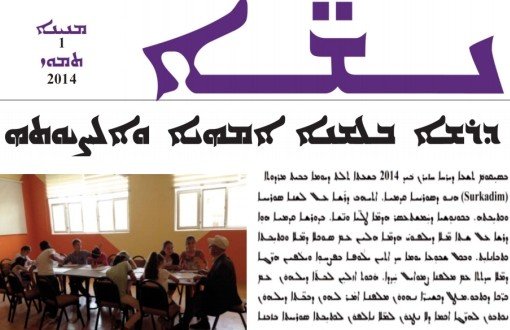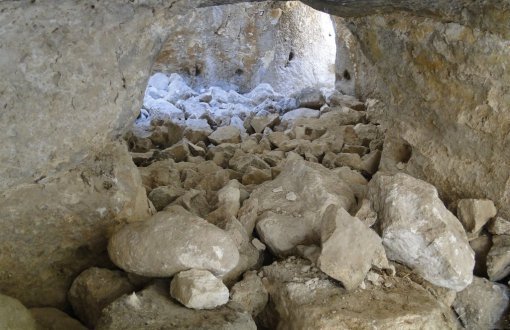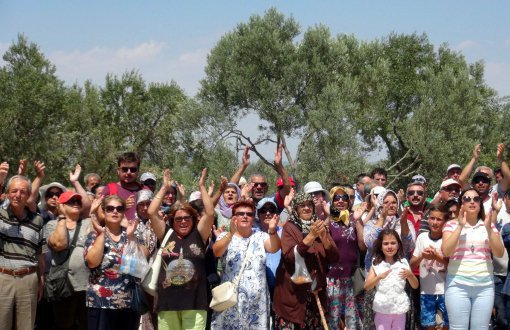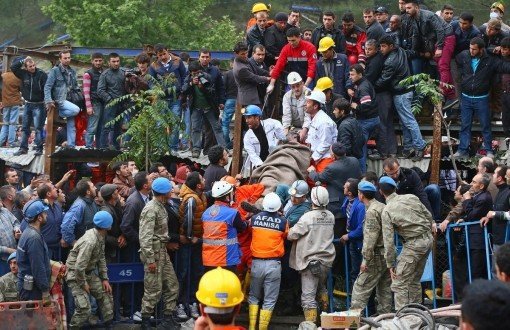First Assyrian Women’s Center Opens in Midyat District

Assyrians’ first women’s center was opened in Midyat, a district densely populated by Assyrians in Mardin province.
The Assyrian Women’s Center aims to strengthen the position and increase the visibility of the Assyrian woman, forced into introjection even more than Turkey’s other women due to linguistic and religious difference.
The Southeast (Turabdin) Assyrian Culture and Solidarity Association opened the center as part of the project backed by the European Union and Human Rights Program.
Moreover, again within the scope of the project is a magazine called "Neshe" (Women), to be published trimonthly in Assyrian and Turkish. The magazine is distributed with the Assyrian newspaper Sabro.
Gender education, Assyrian language courses geared at women and children, folklore, music, photography classes will be provided at the center. And what is more, instruction in Assyrian handicrafts facing extinction such as mat weaving and cloth printing is to be offered as well.
The aim is to ensure the continuity of the center by founding an Assyrian Women’s Association after the project is over.
“The Assyrian woman is twice as reserved”
Project Assistant Ninve Özgün specified that they want to lay bare the introverted Assyrian women’s problems and incorporate the women into social life.
"The introversion seen in some women of the region is experienced twice as strongly in Assyrian women as a result of difference in language, race and religion. They find it very hard to go out in public, which is why they cannot get jobs. And this leads to their total introversion. When we opened the center, we encountered much more interest than we expected. Women usually come to the center with their children.
Learning to write in one’s mother language
"For instance we all speak Assyrian, but in the language courses women learned to write in their own mother tongues. This is a great development. Also, too many words from other languages have entered Assyrian throughout the years. Here they learn new words in their mother tongue. That really drew their attention.
"Furthermore, weaving mats from wheat stems and printing are our cultural wealth. However, no one has been doing these for a long time; at the moment there are only one or two Assyrians left who know how to do these. Women in classes are now coming to remember these handicrafts."
A people unable to speak with its neighbors
Project Coordinator Tuma Çelik called to mind that a large portion of Assyrians living in the Mesopotamian region for 7,000 years were made to immigrate.
"Although the Lausanne treaty featured Assyrians, they were precluded from ‘minority’ status. They encountered difficulties in preserving their language and culture due to pressures throughout the past century.
"Assyrians who lived through the 1915 trauma have grown afraid even to share their thoughts with their neighbors. The women of such a community naturally became more reserved. That is why Assyrian women in Turkey are completely unorganized."
25,000 Assyrians remaining
Assyrians living in Turkey were forced to leave their homeland of centuries due to the 1915 genocide and the conflict between the Kurdish Workers’ Party (PKK) and Turkish Armed Forces in the 1990’s.
Approximately 25,000 Assyrians currently live in Turkey; most are in Istanbul. Around 5,000 live in the Mardin, Şırnak, and Batman provinces in the so-called Turabdin region. Turkey-originated Assyrians living abroad, mostly in Sweden number up to 300,000. (NV/PU)
* Click here to read this article in Turkish.
Engineers Inspect Hasankeyf: Caves Damaged

Sexual, Physical Violence Against People With Disabilities Increase

Villagers on Watch in Çanakkale Against Geothermal Power Plants

Judge Replaced Ahead of Summary Judgement in Soma Trial

Most Miner Families Withdraw Complaint in Occupational Homicide Trial in Şirvan





